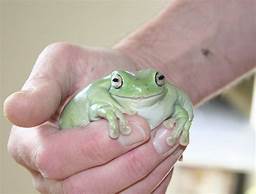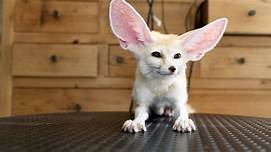Can a Frog Be a Pet?
Frogs are fascinating creatures that can make unique and rewarding pets. They come in a wide variety of sizes, colors, and patterns, and they are relatively low-maintenance. However, before you decide to bring a frog into your home, there are a few things you should consider.

Things to Consider Before Getting a Frog as a Pet
1. The Type of Frog:
There are many different species of frogs, and not all of them make good pets. Some frogs are too large or aggressive, while others are too delicate or difficult to care for. Do your research to find a species that is suitable for beginners and that is legal to own in your area.
2. The Size of the Frog:
Frogs can range in size from a few inches to over a foot long. Choose a frog that is a size that you are comfortable with and that will fit comfortably in the enclosure you have prepared for it.
3. The Temperament of the Frog:
Some frogs are more docile than others. If you are a beginner, it is best to choose a frog that is known for being gentle and easy to handle.
4. The Lifespan of the Frog:
Frogs can live for many years, so be prepared to make a long-term commitment to your pet. The average lifespan of a frog is 5-10 years, but some species can live for up to 20 years or more.
How to Care for a Frog as a Pet
1. Enclosure:
Frogs need an enclosure that is large enough for them to move around comfortably and that provides them with a place to hide and feel secure. The enclosure should also be well-ventilated and have a secure lid to prevent the frog from escaping.
2. Substrate:
The substrate, or bedding, in the frog's enclosure should be loose and well-draining. Some good options include peat moss, coconut fiber, and cypress mulch. Avoid using sand or gravel, as these can be harmful to frogs.
3. Water:
Frogs need access to clean, fresh water at all times. The water should be deep enough for the frog to soak in, but not so deep that it can drown. You should also mist the enclosure regularly to keep the humidity high.
4. Food:
Frogs are carnivores and will eat a variety of live insects, such as crickets, mealworms, and fruit flies. You should feed your frog a variety of insects to ensure that it is getting a balanced diet.
5. Temperature and Lighting:
Frogs are cold-blooded animals, so they need a warm environment to survive. The ideal temperature for most frogs is between 75-85 degrees Fahrenheit. You should also provide your frog with a basking spot where it can warm up under a heat lamp.
Conclusion
Frogs can make interesting and rewarding pets, but they are not for everyone. Before you decide to bring a frog into your home, be sure to do your research and make sure that you are prepared to provide it with the proper care.
Declaration: All article resources on this website, unless otherwise specified or labeled, are collected from online resources. If the content on this website infringes on the legitimate rights and interests of the original author, you can contact this website to delete it.




